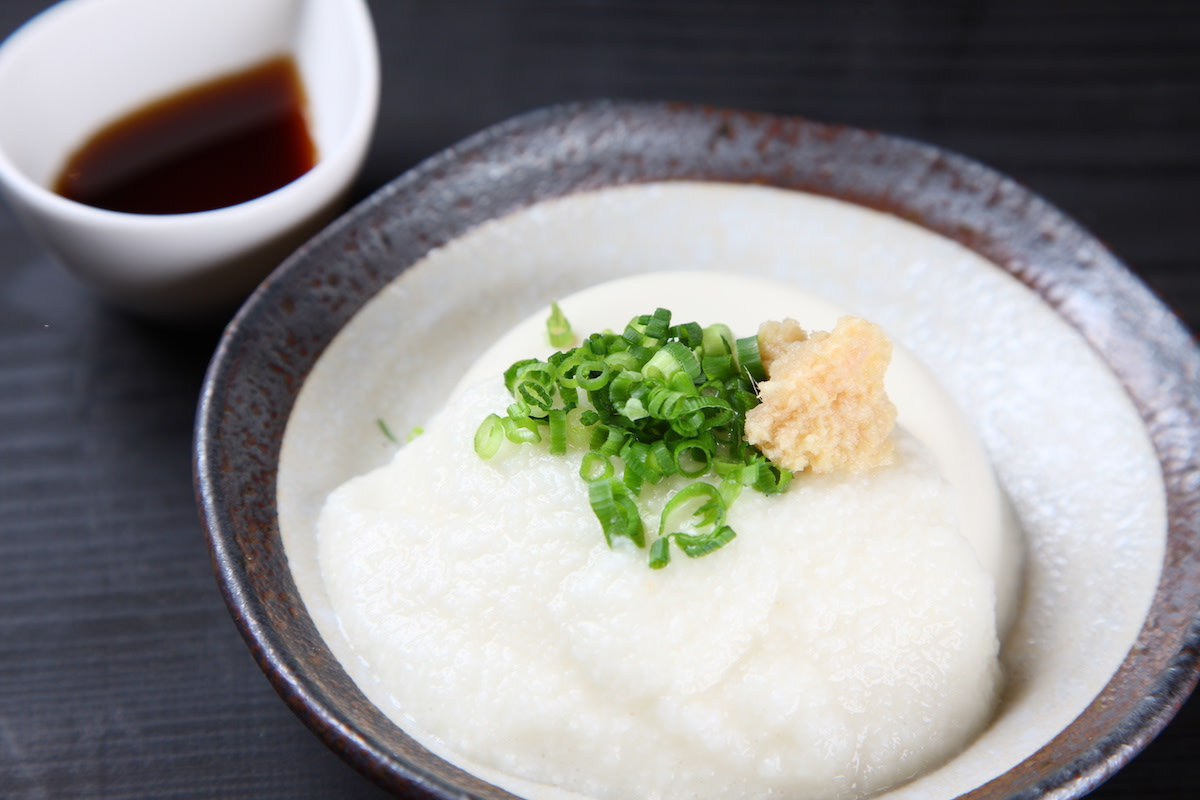All About Tororo: How to Prep Grated Japanese Mountain Yam
Written by MasterClass
Last updated: Jun 7, 2021 • 2 min read
When grated, the Japanese mountain yam morphs into something else entirely: tororo, a sticky, starchy, seasoned pulp that you can eat as a standalone dish, or use as a thickening agent or garnish for various dishes.
Learn From the Best
What Is Tororo?
Tororo is grated yamaimo, or Japanese mountain yam, a cultivar of yam from the Dioscoreaceae family. These long, slender yams, recognizable by their dark brown skin, are among the few edible tubers that can be consumed raw—both cassava and taro must be boiled before consumption. When grated, yamaimo takes on a sticky, pulpy texture, which you can use as a binding agent in vegan cooking, serve as a standalone side dish, or a topping for crudité-style salads, soups, noodle dishes, and stir-fries.
Yamaimo is often confused with nagaimo, commonly known as Chinese yam, a close relative from the Dioscoreaceae family, which is native to East Asia. Yamaimo has lighter, thicker skin and a similar but slightly sweeter flavor. The two types of yam are used in many of the same culinary applications. This interchangeability is so prevalent that Western grocery stores sometimes sell yamaimo under the “nagaimo” label.
5 Common Uses of Tororo
In Japan, tororo is beloved for its texture. Use a microplane to grate the yam: the finer the texture, the lighter the mouthfeel will be. Here are a few other ways to use tororo:
- 1. As a side dish: Tororo has a mild flavor similar to jicama, so it’s usually served with a dashi shōyu (soy sauce seasoned with kelp and dried bonito) to enhance its umami, along with thinly sliced scallions, extra katsuobushi (dried bonito flakes), and optional wasabi for a little extra heat.
- 2. As a thickener: Tororo is often the secret ingredient for fluffy okonomiyaki (savory Japanese pancake). The starch helps bind the batter’s components but is light and silky enough not to turn the pancake soggy or heavy when cooked.
- 3. As a gluten-free batter: You can use tororo as a standalone ingredient in a pared-down okonomiyaki-style batter, using an egg or a bit of potato starch to give the batter more body. Drop the batter into a hot pan and fry it like a pancake.
- 4. As a topping: Tororo is a common addition to udon or soba noodles (tororo soba), miso soup, or atop a serving of natto, sticky fermented soybeans.
- 5. As a mix-in: You can serve cold tororo served over cooked wheat porridge (known as mugitoro) or make yamakake, a mixture of tororo and raw tuna seasoned with soy sauce. Yamakake can also be served over rice as a donburi (any dish where the primary components are served over rice).
How to Prepare Tororo
There are only a few steps involved in the preparation of tororo. You’ll need a vegetable peeler, box grater or microplane, a small container to hold the pulp, and a pair of gloves to protect your skin from the oxalates in the raw yamaimo, which can cause skin irritation.
To prepare tororo, first, use the vegetable peeler to remove the outer skin of the yamaimo. Then, grate the yamaimo with a microplane or box grater (carefully, since the exposed flesh is slippery) to use as a condiment, topping, or base for a loose fritter.
Want to Learn More About Cooking?
Become a better chef with the MasterClass Annual Membership. Gain access to exclusive video lessons taught by the world’s best, including Niki Nakayama, Gabriela Cámara, Chef Thomas Keller, Yotam Ottolenghi, Dominique Ansel, Gordon Ramsay, Alice Waters, and more.
